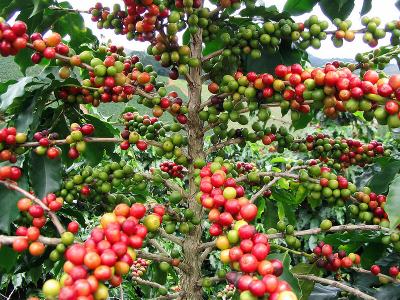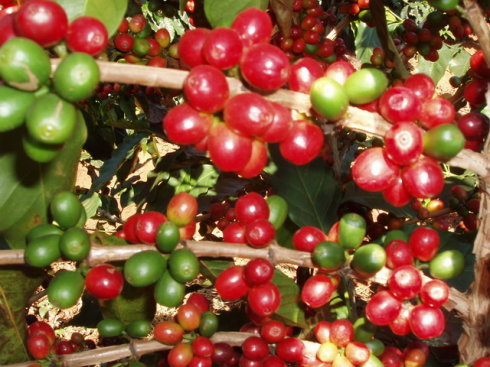The oldest coffee tree species, the coffee culture you don't know, the mysterious world of coffee.

Do you know what is the oldest kind of coffee tree? Baitianhui Coffee training School shares coffee culture with you. Many factors affecting coffee cultivation are largely related to the variety of coffee, and there are great differences between regions.
Arabica (arabica) is the oldest coffee tree. Arabica is a high-growing variety, usually grown in mountains, plateaus or volcanic slopes, the most suitable height for growth is 1000-2000 meters above sea level, the annual precipitation in these areas is 150,200cm, and the day is warm and the night is cool. The annual average temperature is between 15 and 24 degrees Celsius.
Arabica coffee trees bloom after the rainy season, and it takes nine months for coffee cherries to mature after flowering. A typical Arabica tree produces less than 5 kilograms of fruit a year, which can be processed into at least 1 kilogram of dried coffee beans. In the coffee training course, Mr. du of Paradise Coffee training School said that most of the Arabica coffee in the world is harvested by "washing" or wet processing. such coffee beans are generally larger, longer and flatter than Robusta coffee beans, and contain fewer coffee gardens and can have a lighter and tastier sour taste.
Arabica coffee accounts for about 70% of the world's coffee, but it is harder to grow and less resistant to diseases, pests and frosts, so it is not surprising that it is more expensive. Among the many varieties of Arabica, the most special and famous are typica and bourbon, from which many other varieties have been derived, such as tico, kent, mokka, Blue mountain, Brazilian hybrids (mondo nuevo or mundo novo), garnica and mibirizi.
Varieties cultivated by Brazilian hybrids include villasarchi, geiSha and willalobos. Katuwa is another kind of hybrid variety with caffeine bean mutant, whose fruit may be yellow (amarelo) or red (vermelho), while san ramon is a mutant of tipica.
Source: Beresta's blog
Important Notice :
前街咖啡 FrontStreet Coffee has moved to new addredd:
FrontStreet Coffee Address: 315,Donghua East Road,GuangZhou
Tel:020 38364473
- Prev

Coffee tree, coffee flower, coffee fruit detailed introduction to understand the growth process of coffee beans
Coffee tree is an evergreen tree with small white flowers and green fruits that turn red when ripe. A normal coffee tree can grow to 5 to 10 meters tall, but farmers often prune it to less than 2 meters to make it easier to harvest. After flowering bear a dark green oval fruit, mature fruit from dark green to bright red, due to color and cherry
- Next

A correct understanding of the practice of Didi pot coffee in Vietnam to understand the production, history and culture of Vietnamese coffee
On this trip to the border between China and Vietnam, I tasted this Vietnamese Didi pot coffee for the first time in Puzhai. When the boss brought this kind of coffee, I was a little at a loss. Vietnamese coffee originated from drip-filtered coffee which was very popular in France in the early 19th century and was introduced into Vietnam with the colonial relationship between France and Vietnam. Vietnamese coffee is not brewed in a coffee pot, but a special dripping coffee cup.
Related
- What is the meaning of lactic acid fermentation with coffee bean treatment?
- How to judge the state of foam by sound?
- How does the latte pull out the unicorn pattern? Come to get for a little trick to improve the flower pull!
- Will flower pulling affect the taste of the latte?
- Do you know the history of coffee?
- The difference between honey treatment and sun washing what is raisin honey treatment?
- What kind of milk can a novice use to make coffee foam to keep the foam longer? The correct method and skills of milking tutorial sharing
- Why do washed coffee beans taste sour? Flavor characteristics of washed Coffee
- Introduction to the skill of how to practice the size and height of water injection around the circle of hand-brewed coffee
- How do beginners practice coffee flower drawing from scratch?

